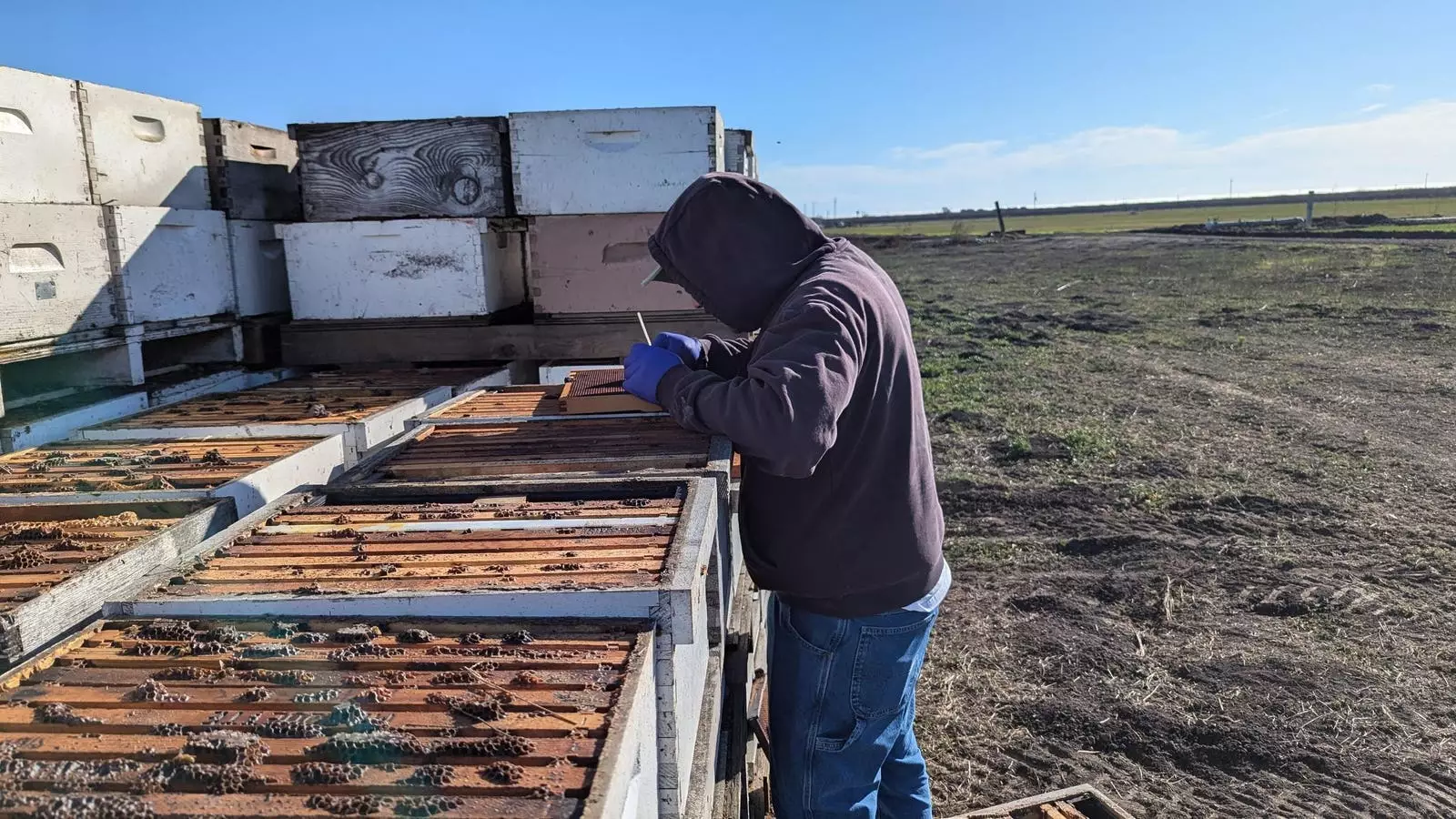This past winter marked an alarming chapter in the history of beekeeping in the United States, as millions of bees perished, leaving beekeepers and the agricultural industry grappling with unprecedented losses. A recent survey conducted by prominent bee industry groups indicates that upwards of 50% of bee colonies have died off, translating to a staggering financial blow of over $139 million. With the California almond pollination season imminent, the timing of these losses could not be more critical, as this event necessitates the mobilization of nearly all of the country’s three million honey bee colonies.
Many industry professionals are drowning in uncertainty, consumed by concern for their livelihoods as they face the grim reality of declining bee populations. Danielle Downey, executive director of Project Apis m., emphasizes the urgency of the situation. The beekeepers who reopened their operations post-winter were greeted not by the buzzing of healthy colonies but by the stark reality that at least half of their bees were either dead or unaccounted for. This crisis has sparked a flurry of discussions among beekeepers and researchers alike as they seek answers to the baffling phenomenon and its potentially devastating impacts on crop production.
The implications of the bee die-off extend far beyond the confines of the beekeeping industry. As bees play an indispensable role in pollinating a variety of crops—ranging from almonds to blueberries, cherries, cranberries, and apples—consumers can expect to feel the repercussions soon. A significant reduction in the bee population raises concerns about potential shortages in grocery stores and rising prices for essential fruits and nuts. The scale of the crisis is evident in the stark statistics: some beekeepers report up to 100% loss in their colonies due to the current die-off, adding layers of fear and anxiety to an already precarious situation.
Blake Shook, a Texas-based commercial beekeeper, highlights the immediate anxiety reflected in the voices of fellow beekeepers across the nation, some of whom may be forced to close their operations. The upcoming pollination season becomes intertwined with the broader question of food security as growers scramble to find enough bees to facilitate the necessary pollination of crops.
The current situation bears a haunting resemblance to the Colony Collapse Disorder (CCD) crisis of 2007-2008, which left beekeepers perplexed as entire colonies seemingly vanished overnight. Recent inspections have discovered that many deceased colonies, despite having ample honey stores, lack adult bees entirely, raising troubling questions about the health and stability of those remaining. Formerly accustomed to experiencing an average loss rate of 15%, the beekeeping industry now faces loss rates starting at around 45%, causing deep concern as this number continues to grow.
Research conducted by the USDA-ARS Bee Research Laboratory, combined with insights from various beekeeping organizations, aims to pinpoint the roots of this widespread mortality. In contrast to conventional beehive threats like the varroa mite—one of the most notorious parasites in the beekeeping community—current analyses reveal few obvious culprits behind the die-off. Researchers are now tasked with investigating potential viruses, additional parasites, and pesticide residues to uncover the etiology of the crisis.
Danielle Downey warns that increasing bee mortality rates signify a shift toward an unsustainable future if concrete action isn’t taken. Honeybees serve as a cornerstone for pollination that directly impacts food production. The need for more protective measures and resources for beekeeping is becoming increasingly urgent.
The looming threat extends beyond mere survival for the beekeeping community; as grower requests for pollination services heighten amid dwindling bee numbers, desperation is becoming palpable. Some beekeepers have resorted to illicit behaviors, including the theft of other beekeepers’ hives, illustrating the gravity of the situation. The California State Beekeepers Association reports an alarming increase in hive thefts—up to 87% since 2013—straining relations within the community and compounding existing pressures.
The challenges facing the beekeeping industry underscore the need for systematic changes that reflect the realities of today’s agricultural landscape. It is essential for stakeholders—ranging from beekeepers to researchers and policymakers—to engage cooperatively in developing strategies and solutions that will secure the health of bee populations. As Tim Hollmann, a seasoned beekeeper, notes, the combination of poor management practices, foreign honey competition, and now this unprecedented die-off poses a multi-faceted threat to survival.
As we stand at a critical juncture where biodiversity and food security are intricately linked, addressing the concerns plaguing our bee populations remains paramount. Whether it is through enhanced research, improved agricultural practices, or strengthening community collaborations, a concerted effort is essential to safeguard the future of both bees and the crops they pollinate.

